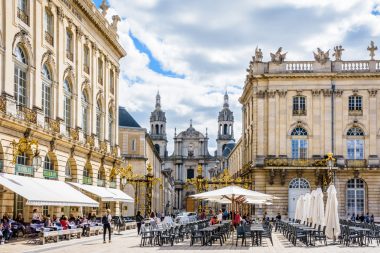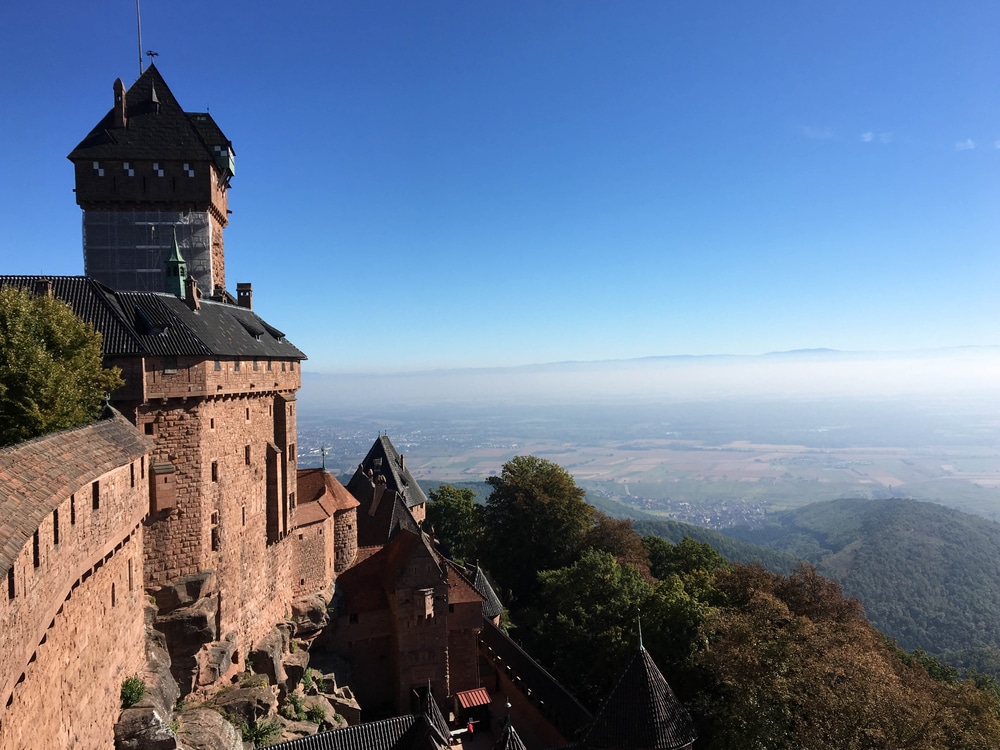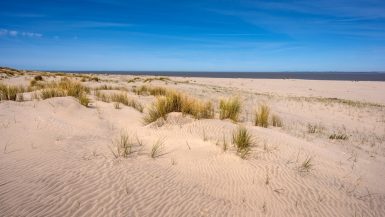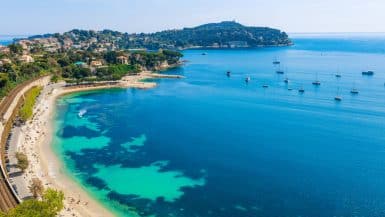Grand Est – this region is by no means unknown, as it includes Alsace, Champagne-Ardenne and Lorraine. As a result, cities with illustrious names such as Strasbourg, Nancy and Metz are also located in Grand Est. The capital of the French region is Strasbourg. Grand Est, this huge new region in eastern France was founded in 2016. It borders Belgium, Luxembourg, Germany and Switzerland. It is an interesting cultural melting pot, which is also clearly reflected in the architecture and gastronomy.
Grand Est has an interesting history to offer. In addition to art and culture, the region in eastern France offers a unique environment. White wines and champagne are produced in the important wineries. Gastronomic tours offer holidaymakers the opportunity to taste the wines in the cellars and discover the typical products of the region. White wines from Alsace come mainly from the renowned champagne production areas in Reims, Épernay and Châlons-en-Champagne.
Top things to do in Grand Est/France

Strasbourg, the largest city in the region, is also the administrative capital. It is also known as one of the three seats of the European Parliament. The city offers visitors tourist attractions ranging from the Notre-Dame de Strasbourg cathedral with its Gothic style to the picturesque Petite France district on the Grande Île, (which is surrounded by water). Other highlights are the Strasbourg Cathedral. With its 140-metre-high tower, the sandstone building is one of the most important cathedrals in European architectural history. The cathedral is also very worth seeing because of its filigree façade.
The famous cities of the Grand Est also include Colmar with the Cathedral of San Martino and the half-timbered houses of the Petite Venise, as well as the green Metz and Reims, the city of kings and champagne. The medieval cities of Nancy and Troyes are not to be forgotten either. In addition to the dynamic metropolitan areas, there is also no shortage of picturesque villages, beautiful mountains, forests and lakes.
Other recommendations for the Grand Est
Epernay
Even if you’re not a wine lover, don’t miss a visit to the Mercier and Moêt & Chandon champagne cellars. The Maison Mercier, for example, can be explored by visitors on a small train that takes them through the cellars. Epernay is considered the center of champagne production. It is also worth strolling through the Avenue Champagne with its beautiful private villas. In the surrounding villages, there are also smaller champagne producers.
Reims
Head to Reims, where you’ll find the most famous and respected Champagne houses. In the historic village of Hautvillers, there is an abbey church that houses the tomb of the monk Dom Pérignon. In his time, he was significantly involved in the development of champagne production. Reims is known for its beautiful Notre-Dame de Reims Cathedral. Built in the 13th century, the Gothic building has been the home of many kings, hence the name of Reims as the “City of Coronations”. Visitors should also plan a visit to the Palais de Tau. There is a museum there where you can learn interesting facts about the history of the cathedral and the coronations of France’s kings. You can also take a drive through the picturesque northern vineyards of the Montagne de Reims.
Mines in Lorraine
Lorraine mines have significantly shaped the face of Lorraine as we know it today. In the Rouge-Montagne mine, for example, visitors to the region, equipped with helmets and headlamps, walk in the footsteps of the miners of the Dukes of Lorraine. Afterwards, they will be guided through an exhibition of tools, equipment and videos.
Metz
The city center of Metz (Lorraine) is full of elegant streets and villas, starting with the Temple Neuf or the Porte des Allemands, a well-preserved gateway from the 13th century. This district goes back to an idea of the German Emperor Wilhelm II, after it became part of the “Second Empire” (1871 to 1918) in 1871. An interesting bridge spans the river Seille. The Centre Pompidou in Metz exhibits temporary collections. The ramparts of Metz are still well preserved. Another eye-catcher is the stained glass windows of the Gothic Saint Étienne cathedral.
Nancy

The historical significance of the city is immediately noticeable. After all, Nancy is the capital of the former Duchy of Lorraine. Stanislas Square in Nancy is considered one of the most beautiful squares in Europe. Place Stanislas is also the city’s landmark. It was built in 1752 and is now a UNESCO World Heritage Site. Around the Place Stanislas, in addition to the town hall, there is the opera theatre, the “Museum of Fine Arts” and lots of interesting shops.
The battlefield of Verdun
In 1916, the longest battle in the history of mankind took place in this place. There were 302 days of uninterrupted fighting, which ended with a French victory and the failure of the German troops. Today, the Verdun battlefield is a place of remembrance for France and the whole world. The bloody battles and unprecedented artillery duels are highlighted by memorials such as the forts of Vaux and Douaumont, as well as the Verdun Memorial and the Douaumont Ossuary. The more than 100-year-old battle sites have remained intact to this day.
Monkey Mountain
We also present the famous Affenberg, founded in 1969, below Kintzheim Castle in Alsace. The Berber macaque breeding farm is home to about 300 Barber macaques of all ages. They live freely all year round in a 25-hectare pine forest. There are several kilometers of marked educational and hiking trails in the park. During demonstrations, the feeding of the animals can be observed.




